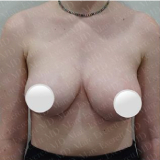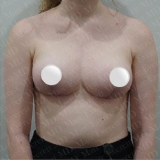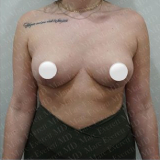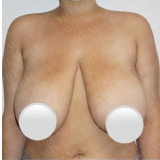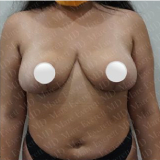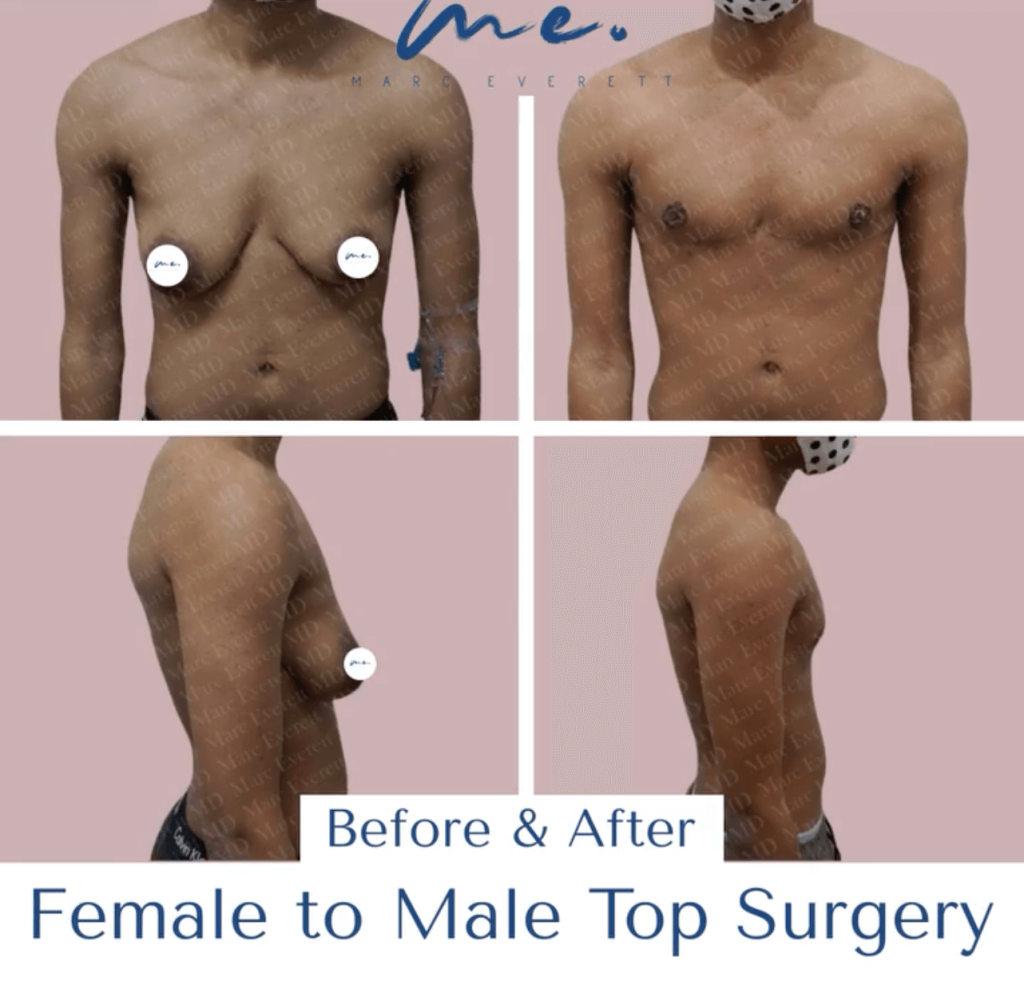When you’re researching how to get top surgery, you’ll find that there is a lot more to consider than just who your nearest surgeon is. You’ll want to find a board-certified plastic surgeon that is not only experienced with providing outstanding results but is also a compassionate caregiver that will support you on the next step in your journey.
For one, there are several different types of procedures that can be used for FTM and non-binary top surgery. Additionally, you’ll need to know how to choose the right surgeon, your options for financing your surgery, and how to prepare for both the procedure itself and the post-op recovery. To provide further context and answer crucial questions about surgical considerations, we’ve noted several pertinent details.
Contents
What are the Types of Top Surgeries?
For female-to-male (FTM) transitions, and for surgery for non-binary individuals to achieve gender ambiguity, top surgery offers individuals the opportunity to take control of their external appearance and assert their proper gender identity. But rather than a one-size-fits-all approach, patients will find that there are actually a number of different surgical techniques that can be used for breast tissue removal and masculine chest contouring. These include:
- Double-incision technique with nipple grafts
- Periareolar technique
- Keyhole technique
- Liposuction
Each type of top surgery has its benefits and drawbacks and may be better for some patients than others. Dr. Marc Everett customizes a treatment plan for each of his patients, making sure that everyone gets the right technique based on their chest anatomy and the goals they wish to achieve.
Choosing a Top Surgery Procedure
The decision about what technique should be used for FTM chest masculinization is made by both patient and surgeon. As you begin the process, it may be helpful to familiarize yourself with the basics of each procedure so that you can go into your first consultation with a basic idea of the options and questions you may have. From there, your surgeon will be able to offer additional guidance and ensure that you get the right top surgery procedure for your needs.
Double-incision technique with nipple grafts
This is the preferred technique for most individuals seeking top surgery. The double incision top surgery technique is ideal for a variety of different body types. For the individual with large heavy breasts or smaller breasts that sag, it allows for the removal of all of the extra skin that causes the breast to hang below the breast fold. This allows for a flat, tight chest where the skin of the breast meets neatly with the breast fold.
For the athletic individual, it allows for the greatest degree of masculinization and Dr. Everett’s nuances for contouring will create a more square shaped chest with the borders of the pectoralis muscle shining on through.
The double-incision technique involves creating an incision at the lower breast crease and then removing the underlying breast gland. Another incision is made to remove the nipple and areola, which can then be reshaped and resized before being grafted back onto the chest in a more anatomically masculine shape and position.
Periareolar technique
Individuals with less excess breast tissue may prefer the periareolar technique, also known as the donut or circumareolar technique. To do it, surgeons create two incisions: one around the edge of the areola and another, slightly larger one around the first incision. The skin in the “donut” area between the incisions is removed, as is excess breast tissue. Then the skin from the edge of the outer incision is pulled taut to the areola and reattached. This is different from the double incision technique because a circular scar sits around the edge of the areola. The major drawback of both this and the “keyhole” technique is that the nipple remains in an anatomically feminine position – high and central on the chest skin.
Keyhole technique
The keyhole technique is done by making a small incision around the lower border of the areola through which the entire breast mound is removed. While this technique does provide the least amount of visible scarring, it also does not allow for repositioning of the nipple. It also does not remove any skin and instead relies on the skin to retract after surgery. Candidates for the keyhole technique are those with small chests and good skin elasticity who do not require the nipple to be moved.
Liposuction
To achieve more thorough tissue removal, liposuction can be combined with any of the above techniques. Some patients may even benefit from liposuction to the breast without the need for another surgical procedure, including patients with naturally small areolas and a limited amount of breast tissue. Scarring with liposuction is minimal.
Dr. Everett’s own Innovation in Post-Operative Management with the Pravena Plus Dressing

In order to provide his patients with an easy, comfortable, drainless, and clean post-operative care regimen, Dr. Everett went back to the drawing board on how to dress the surgical site. Drawing from his experience with breast cancer reconstruction, Dr. Everett utilizes the Pravena Plus incision management system with his own design to achieve three important goals and simultaneously replacing the two things that Top Surgery patients dislike the most… painful bolster dressings with a dozen stitches that need to be removed and discomforting drains that hang off your side for a week and make a mess to empty. Instead of a traditional bolster dressing, which applies constant and painful pressure to the surgical site, patients receive a VAC (vacuum-assisted closure) that applies equally constant—but more comfortable—pressure to the grafts without any stitches. For most patients, it also eliminates the need for drains, since the gentle constant pressure of the VAC presses the chest skin down against the muscle, eliminating the empty space beneath where fluid can build up.
The pressure gradient created by the VAC dressing encourages blood flow down through the chest skin to the edges of the surgery site, where it is needed most. This is a tactic used in mastectomy to optimize the healing environment of a vulnerable surgical site and decrease the risk of wound healing complications.
How To Choose a Surgeon for Top Surgery
Choosing a surgeon is one of the biggest decisions you’ll make when it comes to top surgery. With that in mind, here are some of the key things you should be looking for so that you can be sure to choose the right surgeon for the job:
- Experience – You want a surgeon who has a strong reputation, particularly among trans and non-binary individuals. Talk to friends, read reviews online, join local online communities for recommendations, and ask the surgeon’s office questions about whether (and how) they accommodate the needs of their trans patients.
- Insurance coverage – Many insurance plans do cover top surgery for FTM and non-binary individuals, but not all surgeons will accept your insurance. Dr. Everett’s staff will help you better understand how your insurance may or may not be able to be used to cover your costs for surgery.
- Location – You will have to travel to the surgeon’s clinic for pre-op and post-op appointments, as well as for the surgery itself. As such, it’s a good idea to choose someone who you can reliably get to, factoring in commute time and how you will be getting to and from appointments. Dr. Everett allows virtual visits for out-of-town patients and for some post-op appointments.
- Credentials – Any surgeon you go with should be certified by the American Board of Plastic Surgery (and NO OTHER “Board” should be accepted as valid) and licensed in the state they are practicing. Having hundreds of online reviews can’t be faked. If other patients have had a terrific experience and are enjoying a wonderful outcome, chances are that you will too!
Cost and How to Pay for Top Surgery
The cost for top surgery includes the procedure itself plus additional fees for things like consultations and medications. Prior to scheduling your surgery, your surgeon’s office will go over your entire expected cost, including what insurance will cover and if or what your out-of-pocket costs would be.
Does Insurance Cover Top Surgery?
Most insurance providers do cover FTM top surgery, though they might not cover all of your costs for surgery. Dr. Everett’s office will be able to get you a full overview of your insurance benefits, and how we will utilize those benefits to cover part or all of your cost for surgery.
If Insurance Does Not Apply, How Much Does Top Surgery Cost?
At your consultation, Dr. Everett will examine you and then after working with you to understand your goals, you will discuss the different options you may have for surgery. Once those options are chosen, you will be presented with your quote for surgery.
Other resources that may be available to you instead of or in addition to insurance include surgery grants through non-profit organizations like The Happy Transgender Center and Point of Pride, as well as medical financing. We’ve also had patients with great success crowd-funding their cost for surgery!
What is Top Surgery Like?
Top surgery, like any surgery, is a big deal. And while it’s normal to be a bit nervous going into it, learning a bit about what you can expect can go a long way toward calming those fears. Here’s a quick overview, and we encourage you to speak to Dr. Everett directly for more personalized guidance.
Preparing for Top Surgery
Nearly all of the surgical techniques require patients to be nicotine-free for 6 weeks before, and 6 weeks after surgery. You can smoke or vape marijuana or non-nicotine vapes, those don’t interfere with healing, but you cannot use any nicotine products such as gum or other forms. We recommend being good with your diet and exercise right up to the time of surgery. Making good lifestyle decisions, doing lots of things you know are healthy, and staying away from bad lifestyle decisions, the things you know are bad for you. These lifestyle changes can make a major difference in your surgical outcomes and recovery time.
Talk to your surgeon about any medications that you are currently taking, including supplements, as you may be advised to stop taking them prior to surgery. We do not recommend that you have to stop testosterone treatments at any point in the process. If you do take oral contraceptive pills (estrogen containing), you will have to stop using those one month before surgery.
Surgery Day
Top surgery is an outpatient procedure, so you won’t be staying overnight in a hospital. That being said, it will still be a long day once you factor in the time needed to prep for surgery, the surgery itself, and the post-op in-office recovery period.
How Long Does it Take to Get Top Surgery?
The length of your top surgery depends on the technique your surgeon is using and can range from about 1.5 hours to 2.5 hours.
Results
Your expected results will depend on your own anatomy prior to surgery and the technique that is being used. Dr. Everett will discuss things with you like how flat chested you will be after surgery and what you can expect in terms of scarring and sensation loss.
Top Surgery Recovery and Post-Op Care
You will need to set aside some time to recover after your surgery.
You will wake up from surgery usually with minimal discomfort with the Pravena Plus dressing already on and operational. You will go home with this as your only dressing and it will do its job for 5-7 days. You will not be able to shower during this time.
Most patients require little or no pain medication, as Dr. Everett applies regional nerve blocks using long-acting local anesthesia like Exparel. When most of the sensation of pain is blocked to the chest for up to 3 days, it makes oral pain medication less necessary (sometimes not needed at all!).
Once the dressing is removed, you will be able to shower regularly and move your arms freely. We have our patients wear exercise compression t-shirts or tank tops (like Under Armor) for the next two weeks.
Starting from two weeks after surgery, you’ll be allowed to get back to cardio exercise. Going for a run, getting on a Peloton or an elliptical, or exercises that increase your heart rate and blood pressure are fine at this point. One month after surgery, you can resume all normal activities, as long as you listen to what your body is telling you. Sometimes patients still feel a little tight at 4 weeks and may need to wait until 6 weeks to get back to full speed.
For the first year after surgery, in order to minimize the appearance of color in the scars, Dr. Everett recommends only very limited direct sun exposure. This usually means your first summer after surgery you’ll need to wear a tank top if you’re going to be on the beach or out in the sun all day. A quick dip to cool off will be fine, but if you’re planning to be in the water in the direct sun for a while, we recommend a tank top or rash guard. After the first year is up though, we encourage you to enjoy being shirtless all day for the rest of your lives.
Are you ready to take the next step?
Are you ready to finally feel more like yourself? Dr. Marc Everett is a leading top surgeon in New York City, with a clinic that takes deep pride in its commitment to gender-affirming care. Please contact our office today for a virtual or in-person consultation, and take that first important step toward getting rid of unwanted breast tissue.


